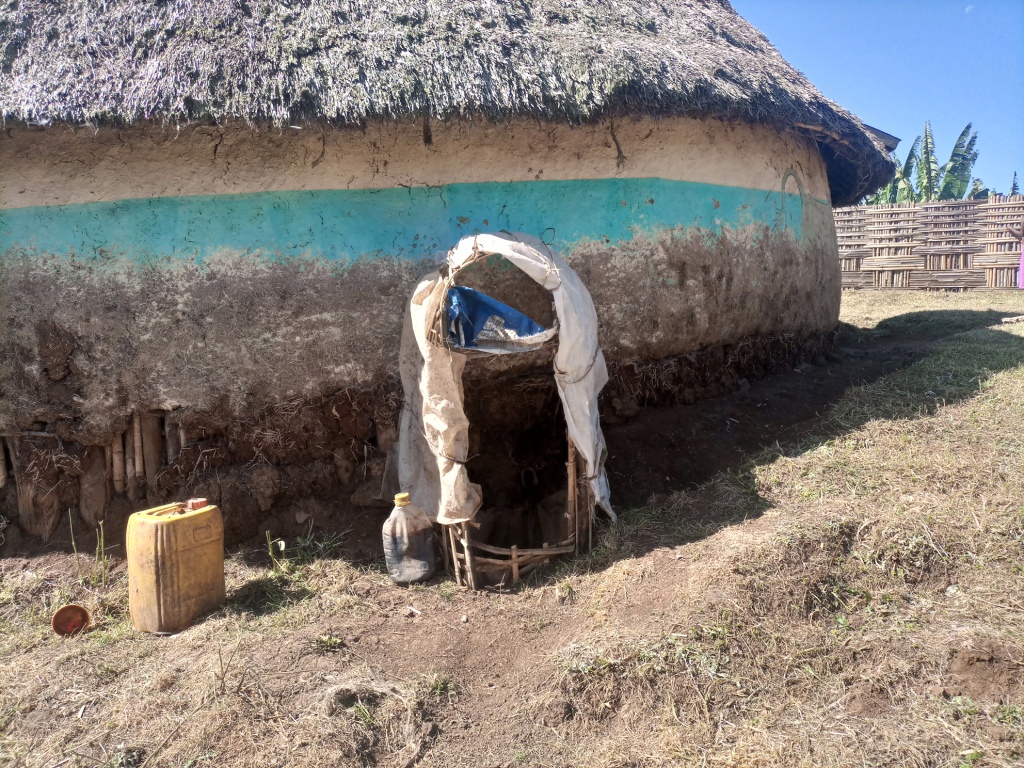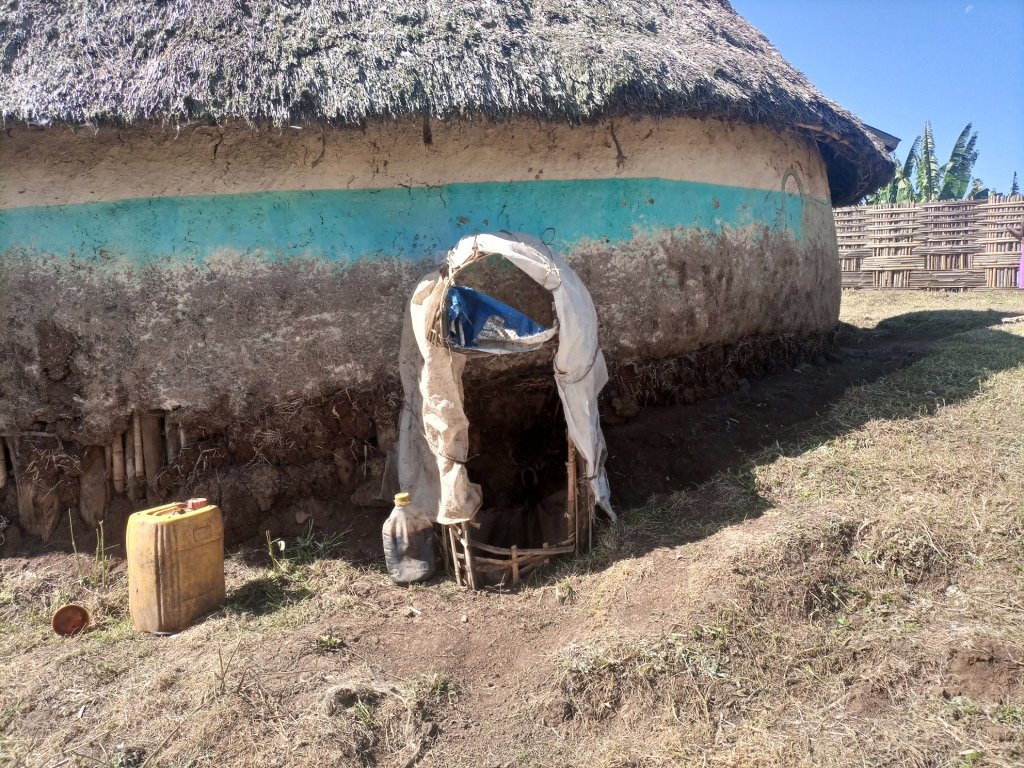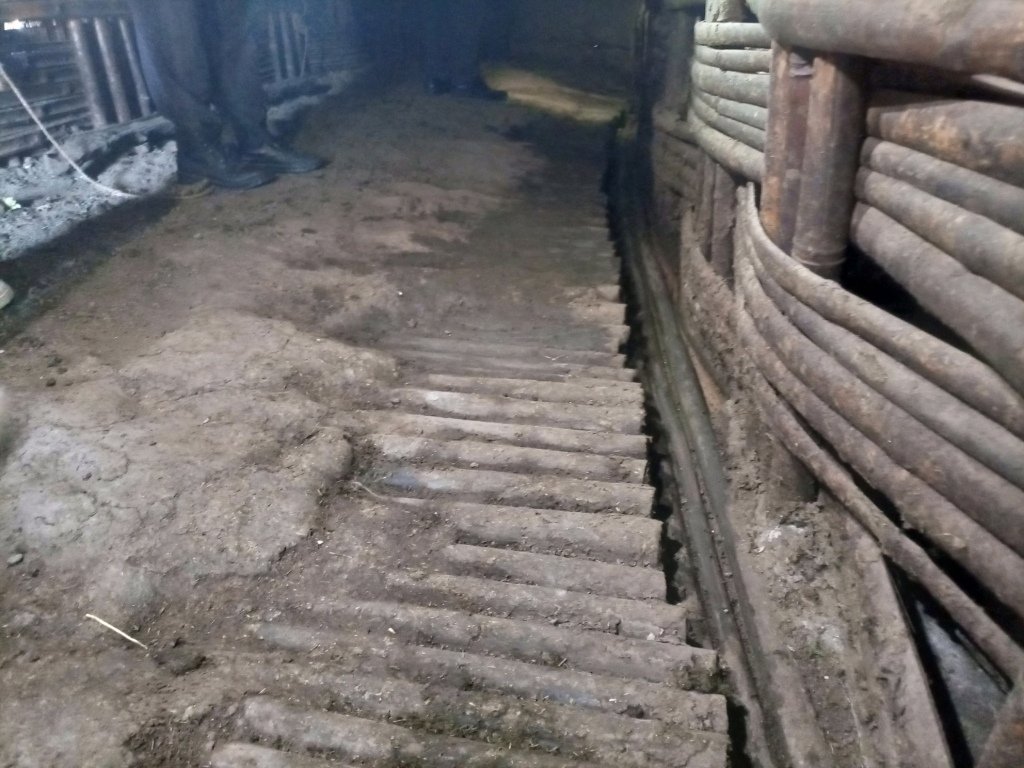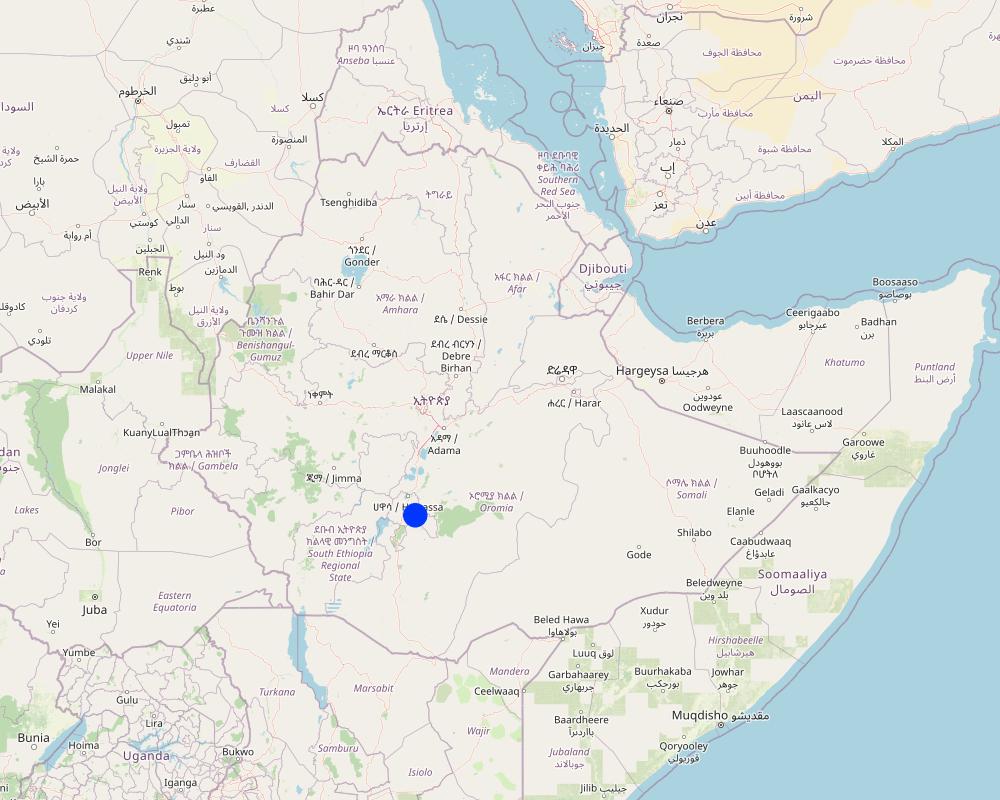Livestock Urine Collection and Use [Ethiopia]
- Creation:
- Update:
- Compiler: GERBA LETA
- Editors: Kidist Yilma, Julia Doldt, Noel Templer, Tabitha Nekesa, Ahmadou Gaye, Siagbé Golli
- Reviewers: William Critchley, Rima Mekdaschi Studer, Sally Bunning
Yeshint Madaberya
technologies_6623 - Ethiopia
View sections
Expand all Collapse all1. General information
1.2 Contact details of resource persons and institutions involved in the assessment and documentation of the Technology
Key resource person(s)
land user:
Shone Wachara
Farmer
Ethiopia
1.3 Conditions regarding the use of data documented through WOCAT
The compiler and key resource person(s) accept the conditions regarding the use of data documented through WOCAT:
Yes
1.4 Declaration on sustainability of the described Technology
Is the Technology described here problematic with regard to land degradation, so that it cannot be declared a sustainable land management technology?
No
Comments:
The technology replaces the chemical fertilizer, urea, to restore soil fertility and improve vegetative growth and crop production. Also, it serves as a pesticide to manage insect pests.
1.5 Reference to Questionnaire(s) on SLM Approaches (documented using WOCAT)
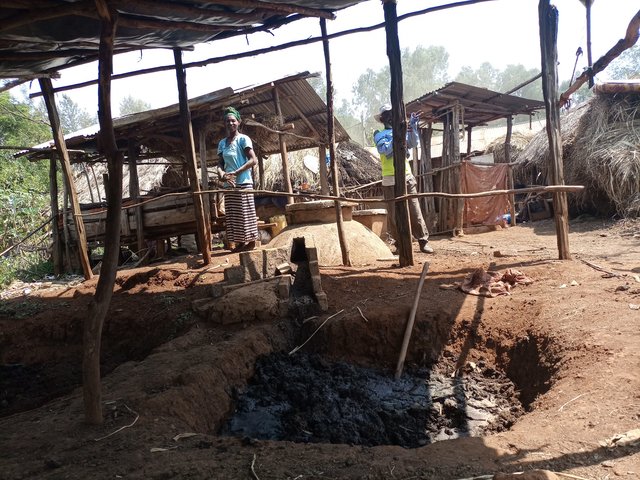
Integrated Soil Fertility Management (ISFM) [Ethiopia]
The Integrated Soil Fertility Management (ISFM) approach has been adopted under the Integrated Soil Fertility Management Project (ISFM+). It was introduced as a quick-win solution to increase both crop and biomass production through the incremental promotion of varied but complementary technology packages.
- Compiler: GERBA LETA
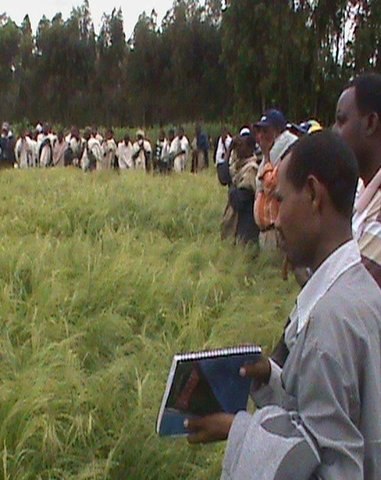
Farmer-Research-Extension Group (FREG) [Ethiopia]
Farmer-Research-Extension Group (FREG) is a grass root level platform aims to bridge gaps on agricultural technology transfer between research and extension linkage and provide a platform of 20-30 members from research, extension and farmer for their joint learning and active participatory role in agricultural technology evaluation and dessimination.
- Compiler: Gizaw Desta Gessesse
2. Description of the SLM Technology
2.1 Short description of the Technology
Definition of the Technology:
Collection of livestock urine allows resource-poor farmers to capture nutrient-rich livestock waste and use it to substitute urea fertilizer. It is a liquid organic product that restores soil fertility and pest management.
2.2 Detailed description of the Technology
Description:
Enset, the “false banana”, is a perennial that grows well under the supply of organic fertilizers (farmyard manure, urine, compost and other household refuse). In the enset farming system, farmers traditionally shelter their livestock behind a partition within the main house. They construct a sloping floor in the livestock stall to allow the urine to drain into a narrow channel that leads to nearby enset and vegetable plots. However, construction of a collection chamber on the outlet side is an innovative approach which allows for better use of the urine. The collected urine fertilizes annual crops such as barley, maize, and vegetables - notably kale, carrots, and onions, via foliar and basal applications. Land users collect and preserve the urine for about 15 days before applying it to the target crops for the intended purposes. The urine is also used for pest management such as aphids and cutworms. According to the land user interviewed about 20 litres a day can be collected from six cattle. This implies the potential to collect about 7 cubic metres a year by a farmer: a considerable resource that should not be lost when there is an urgent need to restore soil fertility given ongoing and severe problems with land degradation. Therefore, urine collection and storage can be a way of reducing substantial investment in chemical fertilizers. To learn and showcase the benefits of urine as a replacement for urea fertilizer, a farmer sprayed 80 litres of urine twice onto 600 m2 of a ISFM+ barley demonstration plot. The sprayed amount replaced the equivalent of 6 kg urea that currently costs about 300 ETB.
Housing animals enables the collection of a reasonable quantity of urine to restore the soil fertility at the homestead and on the farm. Locally available bamboo helps to construct partitions and stall floors for the livestock as well as serving as a pipeline to drain the urine into a collection chamber. The benefits of applying urine goes beyond simply urea replacement, and its potential is merely limited by land users knowledge, skills, and motivation. These can be acquired via training, demonstration, exchange visit, and social learning. Land users like the role of urine in restoring soil fertility and boosting production. Furthermore, urine serves as integrated pest management via targeted application, deterring insects. However, the smell of the urine is unpleasant and may deter farmers from its use as they do not have safety clothes or masks to use when spraying the crop.
2.3 Photos of the Technology
General remarks regarding photos:
The photo portrays the floor orientation and the livestock partition/ stall drainage canal that leads urine to the collection chamber outside the house.
2.4 Videos of the Technology
Comments, short description:
Video for this technology was not captured.
2.5 Country/ region/ locations where the Technology has been applied and which are covered by this assessment
Country:
Ethiopia
Region/ State/ Province:
Sidama
Further specification of location:
Tuticha Kebele 01
Specify the spread of the Technology:
- applied at specific points/ concentrated on a small area
Is/are the technology site(s) located in a permanently protected area?
No
Map
×2.6 Date of implementation
Indicate year of implementation:
2022
2.7 Introduction of the Technology
Specify how the Technology was introduced:
- through land users' innovation
- as part of a traditional system (> 50 years)
- through projects/ external interventions
Comments (type of project, etc.):
Purely collecting and using urine for target application to the crop as a replacement for urea fertilizer was introduced by ISFM+ of the GIZ. However, land users used to drain slurry of manure and urine from livestock stall to the nearby enset farm. Land users forge spraying vessels and collection pits lined with plastic materials and temporary shade to urine collection points.
3. Classification of the SLM Technology
3.1 Main purpose(s) of the Technology
- improve production
- reduce, prevent, restore land degradation
- conserve ecosystem
- preserve/ improve biodiversity
- create beneficial economic impact
3.2 Current land use type(s) where the Technology is applied
Land use mixed within the same land unit:
No

Cropland
- Annual cropping
- Perennial (non-woody) cropping
Annual cropping - Specify crops:
- fodder crops - grasses
- cereals - barley
- vegetables - leafy vegetables (salads, cabbage, spinach, other)
- legumes and pulses - peas
- root/tuber crops - potatoes
- False banana (enset)
Number of growing seasons per year:
- 2
Specify:
Belg (short rain) and Meher (long rain).
Is intercropping practiced?
No
Is crop rotation practiced?
Yes
If yes, specify:
Cereals, like barley, rotate with legumes (such as field peas or faba beans).
3.3 Has land use changed due to the implementation of the Technology?
Has land use changed due to the implementation of the Technology?
- No (Continue with question 3.4)
3.4 Water supply
Water supply for the land on which the Technology is applied:
- rainfed
Comments:
Bimodal rainfall is received twice yearly (short rain Mid-February to Mid-April, and prolonged rain from June to September).
3.5 SLM group to which the Technology belongs
- integrated crop-livestock management
- integrated soil fertility management
- integrated pest and disease management (incl. organic agriculture)
3.6 SLM measures comprising the Technology

agronomic measures
- A2: Organic matter/ soil fertility

management measures
- M7: Others
Comments:
Crop protection: it plays the role of Integrated Pest Management (IPM).
3.7 Main types of land degradation addressed by the Technology

chemical soil deterioration
- Cn: fertility decline and reduced organic matter content (not caused by erosion)

biological degradation
- Bq: quantity/ biomass decline
- Bp: increase of pests/ diseases, loss of predators
3.8 Prevention, reduction, or restoration of land degradation
Specify the goal of the Technology with regard to land degradation:
- reduce land degradation
- restore/ rehabilitate severely degraded land
Comments:
The nitrogen in urine stimulates the growth of various crops and non-crop wild species and restores degraded and potentially degradable lands.
4. Technical specifications, implementation activities, inputs, and costs
4.1 Technical drawing of the Technology
Technical specifications (related to technical drawing):
The urine collection chamber is set up adjacent to the rural house on the side of livestock stalls. It receives urine that drains out of the sloping floor intentionally constructed using stone or bamboo to drain the liquid wastes through conduit directly to the collection chambers. A ditch that is placed adjacent to the outlet also takes the slurry to the nearby farm/garden. The dimension of the collection chamber and the types of materials used to establish the technology varies depending on resource availability or the number of livestock held by the land user. Other materials such as concrete pits or pits lined by google membranes can be used. Furthermore, jerrican or clay pots are the other alternative tools to collect urine. The different local materials replace the use of expensive materials. Small protective caps over the chamber is recommendable to protect the collected urine from rain and the heat of the sun that triggers the volatilization loss of urea. It is also possible to note additional information from the associated keys to describe the sketch.
Author:
Gerba Leta
Date:
30/03/2023
4.2 General information regarding the calculation of inputs and costs
Specify how costs and inputs were calculated:
- per Technology unit
other/ national currency (specify):
ETB
If relevant, indicate exchange rate from USD to local currency (e.g. 1 USD = 79.9 Brazilian Real): 1 USD =:
53.6283
Indicate average wage cost of hired labour per day:
500
4.3 Establishment activities
| Activity | Timing (season) | |
|---|---|---|
| 1. | Construct collection chamber | Dry season |
| 2. | Construct hats or covering lid for the chamber/collection pit | Dry season |
| 3. | Lining drainage line heading to the pit with concrete | Dry season |
| 4. | Storage vessels/barrel | Anytime |
| 5. | Supplying safety clothes (wear, boots, gloves and mask) | In advance |
Comments:
Urine collection chambers, lids or roofs, storage vessels, safety wears, and spraying tools are essential for collecting, storing, and further treating urine before use.
4.4 Costs and inputs needed for establishment
| Specify input | Unit | Quantity | Costs per Unit | Total costs per input | % of costs borne by land users | |
|---|---|---|---|---|---|---|
| Labour | Casual labor | no. | 4.0 | 250.0 | 1000.0 | 100.0 |
| Labour | Carpentering | no. | 1.0 | 1000.0 | 1000.0 | 50.0 |
| Equipment | Safety wears (shirt & trousers, gloves, mask, boots) | Lump sum | 1.0 | 3000.0 | 3000.0 | |
| Equipment | Watering cane | no. | 1.0 | 1000.0 | 1000.0 | |
| Fertilizers and biocides | Effective Micro Organism | Litre | 2.0 | 100.0 | 200.0 | 50.0 |
| Construction material | Cement | kg | 100.0 | 20.0 | 2000.0 | 50.0 |
| Construction material | Stone | m3 | 1.0 | 2000.0 | 2000.0 | 100.0 |
| Construction material | Corrugated iron | pcs | 2.0 | 1000.0 | 2000.0 | 50.0 |
| Construction material | Posts and nails | Lump sum | 1.0 | 1000.0 | 1000.0 | 50.0 |
| Total costs for establishment of the Technology | 13200.0 | |||||
| Total costs for establishment of the Technology in USD | 246.14 | |||||
If land user bore less than 100% of costs, indicate who covered the remaining costs:
ISFM+ of the GIZ
Comments:
For the model farmer who pilots livestock urine collection for soil amendment and management of pests, supporting the construction of a standard collection chamber and supplying associated kits helps to train and facilitate scaling of the technology in the best way. Effective Microorganisms (EMO) is an input being tested to investigate whether it has the property of changing the stink of the urine collected for storage and use on the farm.
4.5 Maintenance/ recurrent activities
| Activity | Timing/ frequency | |
|---|---|---|
| 1. | Effective Microorganisms | Throughout collection and application |
Comments:
The use of EMO to change the bad smell of urine, particularly during storage and application needs to be further investigated to prove and use it to reduce the abhorred side of collecting and applying urine for soil amendment and pest management.
4.6 Costs and inputs needed for maintenance/ recurrent activities (per year)
| Specify input | Unit | Quantity | Costs per Unit | Total costs per input | % of costs borne by land users | |
|---|---|---|---|---|---|---|
| Labour | EMO | Litre | 6.0 | 100.0 | 600.0 | 100.0 |
| Labour | Family labor | no. | 52.0 | 100.0 | 5200.0 | 100.0 |
| Total costs for maintenance of the Technology | 5800.0 | |||||
| Total costs for maintenance of the Technology in USD | 108.15 | |||||
If land user bore less than 100% of costs, indicate who covered the remaining costs:
NA
Comments:
With the assumption that the land user can collect, treat and use about 140 liters of urine per week for different crops, family labor can be used at a lower rate as it is not a full-day operation. Despite our estimation, material and labour costs change in Ethiopia persistently because of market instability and economic crisis that is not uncommon since the outbreak of COVID-19 in 2020.
4.7 Most important factors affecting the costs
Describe the most determinate factors affecting the costs:
Economic crisis, spiking inflation, and overall labour and material market cost instability.
5. Natural and human environment
5.1 Climate
Annual rainfall
- < 250 mm
- 251-500 mm
- 501-750 mm
- 751-1,000 mm
- 1,001-1,500 mm
- 1,501-2,000 mm
- 2,001-3,000 mm
- 3,001-4,000 mm
- > 4,000 mm
Specifications/ comments on rainfall:
Receive bimodal rainfall with a summer maximum.
Agro-climatic zone
- sub-humid
The rainfall distribution is nearly consistent. The temperature is cold typical of highland weather conditions.
5.2 Topography
Slopes on average:
- flat (0-2%)
- gentle (3-5%)
- moderate (6-10%)
- rolling (11-15%)
- hilly (16-30%)
- steep (31-60%)
- very steep (>60%)
Landforms:
- plateau/plains
- ridges
- mountain slopes
- hill slopes
- footslopes
- valley floors
Altitudinal zone:
- 0-100 m a.s.l.
- 101-500 m a.s.l.
- 501-1,000 m a.s.l.
- 1,001-1,500 m a.s.l.
- 1,501-2,000 m a.s.l.
- 2,001-2,500 m a.s.l.
- 2,501-3,000 m a.s.l.
- 3,001-4,000 m a.s.l.
- > 4,000 m a.s.l.
Indicate if the Technology is specifically applied in:
- not relevant
Comments and further specifications on topography:
The topography is unremitting ups and downs.
5.3 Soils
Soil depth on average:
- very shallow (0-20 cm)
- shallow (21-50 cm)
- moderately deep (51-80 cm)
- deep (81-120 cm)
- very deep (> 120 cm)
Soil texture (topsoil):
- medium (loamy, silty)
Soil texture (> 20 cm below surface):
- medium (loamy, silty)
Topsoil organic matter:
- medium (1-3%)
If available, attach full soil description or specify the available information, e.g. soil type, soil PH/ acidity, Cation Exchange Capacity, nitrogen, salinity etc.
Not available
5.4 Water availability and quality
Ground water table:
5-50 m
Availability of surface water:
medium
Water quality (untreated):
good drinking water
Water quality refers to:
both ground and surface water
Is water salinity a problem?
No
Is flooding of the area occurring?
No
Comments and further specifications on water quality and quantity:
Surface and groundwater quality in the highland areas of Sidama region was not suggested as an issue. Rather, surface water can be polluted by soil erosion before the crops cover the ground.
5.5 Biodiversity
Species diversity:
- medium
Habitat diversity:
- low
Comments and further specifications on biodiversity:
The technology is piloted around the homestead. Agriculture is highly intensified in the area. Hence, only plantation forest or peripheral plants such as Eucalyptus species are the common tree species. This signals medium to lower species diversity that similarly applicable to habitat diversity.
5.6 Characteristics of land users applying the Technology
Sedentary or nomadic:
- Sedentary
Market orientation of production system:
- mixed (subsistence/ commercial)
Relative level of wealth:
- average
Individuals or groups:
- individual/ household
Level of mechanization:
- manual work
Gender:
- men
Age of land users:
- middle-aged
Indicate other relevant characteristics of the land users:
The land user doesn't have off-farm income. He generates his livelihood from 2 hectares of land and a few livestock.
5.7 Average area of land used by land users applying the Technology
- < 0.5 ha
- 0.5-1 ha
- 1-2 ha
- 2-5 ha
- 5-15 ha
- 15-50 ha
- 50-100 ha
- 100-500 ha
- 500-1,000 ha
- 1,000-10,000 ha
- > 10,000 ha
Is this considered small-, medium- or large-scale (referring to local context)?
- small-scale
Comments:
Farming is operationalized by hoes (hand-dug) to grow cereal crops. Otherwise, enset culture demands hand digging.
5.8 Land ownership, land use rights, and water use rights
Land ownership:
- state
- individual, titled
Land use rights:
- individual
Water use rights:
- open access (unorganized)
Are land use rights based on a traditional legal system?
Yes
Specify:
The land was inherited from the family line. However, the adopted national constitution declared land belongs to the state and the users. Thus, usufructs issued by the government to the land user.
Comments:
In Ethiopia, the 1995 constitution declared the land as state property but the farmer has usufructs right. As a result, the certificate was issued except in the pastoralist areas of the country. Of course, most people inherited specific plots of land from their lineage, though there was frequent land redistribution during the Derg and early years of the EPRDF regime.
5.9 Access to services and infrastructure
health:
- poor
- moderate
- good
education:
- poor
- moderate
- good
technical assistance:
- poor
- moderate
- good
employment (e.g. off-farm):
- poor
- moderate
- good
markets:
- poor
- moderate
- good
energy:
- poor
- moderate
- good
roads and transport:
- poor
- moderate
- good
drinking water and sanitation:
- poor
- moderate
- good
financial services:
- poor
- moderate
- good
Comments:
Although they mentioned the quality of both ground and surface water is good in the preceding section, the level of sanitation is not significant as the resident use water from the springs for drink and other household activities.
6. Impacts and concluding statements
6.1 On-site impacts the Technology has shown
Socio-economic impacts
Production
crop production
Quantity before SLM:
70 kg from 0.12 hectare of land.
Quantity after SLM:
400 kg from the same land.
Comments/ specify:
With the application of ISFM+ approach and urine as a replacement for Urea, a substantial yield increment was achieved.
crop quality
Comments/ specify:
As the technology is at its early stage of implementation where documentation is not well organized, it was impossible to quantify the harvest and quality of the crop.
land management
Income and costs
expenses on agricultural inputs
Comments/ specify:
As urine complement urea fertilizer, other nutrients from Sulfur, Phosphorus and other micro nutrients remain important.
farm income
Socio-cultural impacts
food security/ self-sufficiency
health situation
cultural opportunities
SLM/ land degradation knowledge
Comments/ specify:
Crop response to urine application is an evidence based for adoption of the SLM technology.
Ecological impacts
Soil
soil moisture
soil cover
soil loss
soil accumulation
soil organic matter/ below ground C
Comments/ specify:
Not practically measured and documented. Besides, the technology is at earlier phase to judge the real impacts.
acidity
Biodiversity: vegetation, animals
Vegetation cover
biomass/ above ground C
habitat diversity
pest/ disease control
Comments/ specify:
It has tangible impacts on managing pests.
Climate and disaster risk reduction
emission of carbon and greenhouse gases
Comments/ specify:
As a foliar application of urine to the target crops might be subjected to evaporation, if not good hours of the day are not identified, there is a likelihood of emission. However, its amount is very insignificant as the little amount used for foliar feeding.
Specify assessment of on-site impacts (measurements):
The on-site assessment is made based on conceptual knowledge of the beneficial effects of collecting and applying livestock urine as a replacement to urea fertilizer and the farmer and experts' knowledge on the fertilizer and pesticidal effects of liquid urine. Otherwise, careful documentation of various types of data is commendable to quantify and properly address such comprehensive questions included in the questionnaire.
6.2 Off-site impacts the Technology has shown
downstream flooding
downstream siltation
groundwater/ river pollution
Comments/ specify:
The impact has not yet measured.
impact of greenhouse gases
Specify assessment of off-site impacts (measurements):
As an optimum application of urine substitute urea fertilizer, it favors the growth of diverse plant species, positively contributing to the overall ecosystem services and reducing degradations. However, it has not been empirically measured.
6.3 Exposure and sensitivity of the Technology to gradual climate change and climate-related extremes/ disasters (as perceived by land users)
Gradual climate change
Gradual climate change
| Season | increase or decrease | How does the Technology cope with it? | |
|---|---|---|---|
| seasonal rainfall | wet/ rainy season | decrease | moderately |
Climate-related extremes (disasters)
Climatological disasters
| How does the Technology cope with it? | |
|---|---|
| drought | not known |
Other climate-related consequences
Other climate-related consequences
| How does the Technology cope with it? | |
|---|---|
| extended growing period | well |
| reduced growing period | moderately |
Comments:
The technology has no direct influence on climate change/climate variability in the short term.
6.4 Cost-benefit analysis
How do the benefits compare with the establishment costs (from land users’ perspective)?
Short-term returns:
positive
Long-term returns:
very positive
How do the benefits compare with the maintenance/ recurrent costs (from land users' perspective)?
Short-term returns:
positive
Long-term returns:
very positive
Comments:
Post-establishment, the maintenance costs are believed to be very low. This shows the technology is cost-effective to resource-poor farmers.
6.5 Adoption of the Technology
- 1-10%
If available, quantify (no. of households and/ or area covered):
Forty-four (44) farmers are currently piloting this technology. Of these, 30 farmers are innovative and adopted the technology on their own using locally available materials to collect and spray urine as a complement to urea fertilizer to the target crops.
Of all those who have adopted the Technology, how many did so spontaneously, i.e. without receiving any material incentives/ payments?
- 51-90%
Comments:
Thirty farmers represent the most significant portion who spontaneously took up the technology.
6.6 Adaptation
Has the Technology been modified recently to adapt to changing conditions?
Yes
other (specify):
Unavailability of the right kits/materials
Specify adaptation of the Technology (design, material/ species, etc.):
Land users use locally available materials to collect, store and spray the urine on the target crops. Meaning the concept is introduced in a way it matches or complements conventional uses of livestock wastes to improve the fertility of soil on which Enset, a perennial crop is growing. Otherwise, standard designs or types of materials and safety precautions kits have not been associated with the technology. Despite the unavailability of the necessary kits for the establishment of the technology, farmers forge their mechanisms to collect and use urine. This indicates the innovativeness of the land/technology users.
6.7 Strengths/ advantages/ opportunities of the Technology
| Strengths/ advantages/ opportunities in the land user’s view |
|---|
| Reduce costs spent on chemical fertilizer. |
| Increase yield per unit of land and land users' income in general. Furthermore, it increases the number of tillers per plant and overall biomass yield. |
| Manage insect pests such as cutworms and aphids. |
| Strengths/ advantages/ opportunities in the compiler’s or other key resource person’s view |
|---|
| It seems a good substitute for chemical fertilizer, urea. It improves farmers' access to wasted resources without being used. |
| It restores the fertility of the soil and improves production and productivity, and species diversity which improves ecological benefits on top of the high return from the most minor investment in fertilizer. |
6.8 Weaknesses/ disadvantages/ risks of the Technology and ways of overcoming them
| Weaknesses/ disadvantages/ risks in the land user’s view | How can they be overcome? |
|---|---|
| Bad smell of the urine when sprayed on the target crops. | By ensuring access to necessary tools. Otherwise, they will not give up on using it since the benefit outweighs the loss. |
| Lack of spraying materials. | If not accessed spraying tools, the farmer committed to using locally forged ones. |
| Weaknesses/ disadvantages/ risks in the compiler’s or other key resource person’s view | How can they be overcome? |
|---|---|
| Stinking of the urine while applying to the crop. | Try to test whether using Effective Micro Organism (EMO) can improve urine smell before using it in the field. |
| Lack of safety wear and associated necessary kits. | Improving access to the necessary materials, knowledge, and skills to use the available resources or materials effectively. |
7. References and links
7.1 Methods/ sources of information
- field visits, field surveys
Four (4) persons, including a land user.
- interviews with land users
A farmer
- interviews with SLM specialists/ experts
Three (3) persons (district expert, regional SLM specialist, and ISFM+ regional advisor).
When were the data compiled (in the field)?
14/01/2023
7.2 References to available publications
Title, author, year, ISBN:
Use of Cow Urine in the Field of Agriculture. Singh, R. 2022
Available from where? Costs?
http://www.pashudhanpraharee.com/use-of-cow-urine-in-the-field-of-agriculture/
Title, author, year, ISBN:
Utilization of urine waste to produce quality cauliflower. Khanal, A., Shakya , S. M., Shah, S. C., Sharma, M. D. 2011.
Available from where? Costs?
https://www.nepjol.info (Free access)
7.3 Links to relevant online information
Title/ description:
Nitrogen concentration in the urine of cattle, sheep and deer grazing a common ryegrass/cocksfoot/white clover pasture. Doi.org/10.1080/00288233.2010.499899
URL:
https://www.tandfonline.com
7.4 General comments
Not every question in the questionnaire is relevant to the Livestock urine collection for soil amendment and integrated pest management practices. Urine collection and use does not address every kind of land degradation stated in the questionnaire. However, it directly or indirectly addresses some of the SLM-related issues.
Links and modules
Expand all Collapse allLinks

Integrated Soil Fertility Management (ISFM) [Ethiopia]
The Integrated Soil Fertility Management (ISFM) approach has been adopted under the Integrated Soil Fertility Management Project (ISFM+). It was introduced as a quick-win solution to increase both crop and biomass production through the incremental promotion of varied but complementary technology packages.
- Compiler: GERBA LETA

Farmer-Research-Extension Group (FREG) [Ethiopia]
Farmer-Research-Extension Group (FREG) is a grass root level platform aims to bridge gaps on agricultural technology transfer between research and extension linkage and provide a platform of 20-30 members from research, extension and farmer for their joint learning and active participatory role in agricultural technology evaluation and dessimination.
- Compiler: Gizaw Desta Gessesse
Modules
No modules


